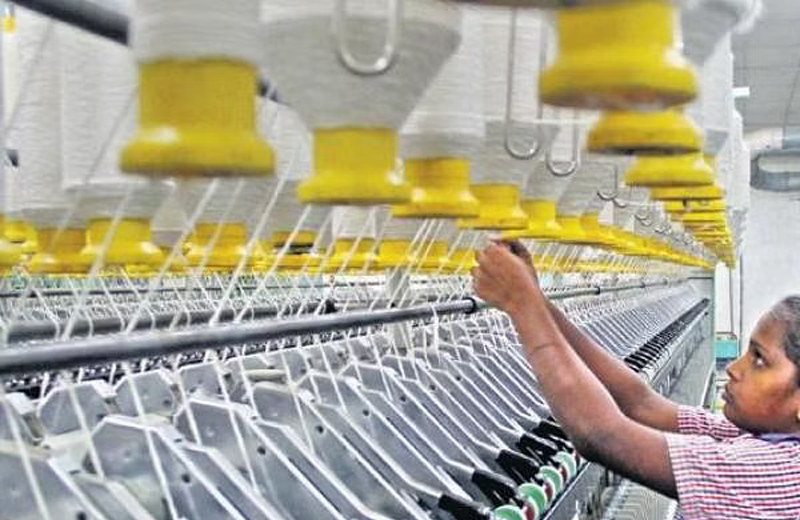
Santosh Mehrotra
However, there was little by way of explicit measures to ensure that India’s manufacturing capacity was strengthened.
No country in the world has managed to reduce poverty consistently or sustain GDP growth without a strong manufacturing base. Between 1979–2014, manufacturing remained at 16–18% of India’s Gross Value Added (GVA). Since 2015, it has declined and reached 13% by 2019, the lowest ever since 1960. By contrast, in Bangladesh, it rose from 15% till 2006 to 21% in 2021. In Vietnam, it increased to 25% of GVA in 2021 from 17% till 2010. These countries have also attracted a significant share of FDI, except China, which vacates billions of dollars worth of manufactured exports.
In India, manufacturing employment has not grown—the exact opposite of what is needed in a labour-surplus economy with 30 million unemployed pre-Covid (and nearing 40 mn now). Five to six million are added to the labour force annually (and twice that number to the working-age population). Meanwhile, employment in manufacturing as a share of total work rose from 10.5% in 2004–05 to 12.8% in 2011–12 and fell to 11.6% or less between 2019–22. This is despite ‘Make in India’ and the Performance Linked Incentive Scheme (PLI).
India had never had an explicit industrial policy or manufacturing strategy since 1991, although the Industrial Policy Statement (1991), when economic reforms began, did articulate what today can only be called an implicit industrial policy. It relied on (a) liberalisation of the domestic economy and deregulation of sectors, including a reduction in sectors reserved for the public sector; (b) opening up to a reduced tariff regime and a new focus on export orientation; (c) de-licensing of industrial capacity in existing or new industries.
However, there was little by way of explicit measures to ensure that India’s manufacturing capacity was strengthened. It was only in 2011 that the government came up with a National Manufacturing Policy, followed by an Electronics System Design and Manufacturing Policy in 2012, along with a newfound emphasis on industrial policy in the 12th Five Year Plan chapter on industry (to which I had the good fortune of contributing as the director general of the Planning Commission’s research institute). Unfortunately, that government went into policy paralysis in its last two years.
‘Make in India’ was not really an industrial policy at all, as it only emphasised on doing business and attracting FDI. The actual results in the last eight years have been the falling share of manufacturing in GDP as well as of manufacturing employment in total employment.
The only other initiative in manufacturing has been PLI, which has many issues. First, it is based on a conceptually flawed approach to industrial policy of picking winning firms (rather than sectors). This is the opposite of the successful approach adopted in East Asia, which did not select winning firms but adopted a combination of a horizontal, cross-sectoral industrial policy and a focus on some key sectors.
The second problem with PLI is the choice of sectors. Eleven of 14 sectors selected to receive financial subsidies are capital-intensive. India is in desperate need of more industrial jobs of good quality; hardly any jobs will result from PLI, except for a few thousand highly skilled ones. The country is desperate for more low and semi-skilled jobs where people can be employed in more labour-intensive sectors.
Third, giving the bureaucracy a role in picking winners harks back to Licence Raj; we know how well that went. It encouraged rent-seeking on a grand scale.
Fourth, there is a significant fiscal cost of PLI: ₹1.5 trillion over five years (between 2021–22 and 2024–25); this is when the fiscal deficit is at a historic high, and the debt to GDP ratio has increased in the Covid years from 60% to 85%. Besides, funds are needed for human capital (technical and vocational education, higher education, R&D), apart from an investment in hard infrastructure.
Fifth, there is a risk: on the completion of five years of subsidy, the beneficiary industries will demand an extension of benefits beyond five years, a demand that the Indian industry was used to making during the Licence Raj. A sunset clause is needed.
Finally, in PLI, there is no expectation that winning firms are expected to export when expanding capacity, an essential prerequisite in East Asia.
By contrast, in India, the labour-intensive manufacturing sectors like food processing, tobacco, textiles, apparel, leather, wood and furniture have declined since 2012. The tobacco and textiles sub-sectors within manufacturing have seen a fall in their share of total manufacturing employment in India (though total jobs grew slightly).
Nearly every successful economic growth take-off in post-war history in East Asia was associated with rapid expansion in apparel exports in the early stages. The ratio of jobs to investment is as follows: in apparel, 31.1, in autos only 2.6, and steel, 1.0 (based on the Annual Survey of Industries, 2013–14). India could take a part of the market share that China is losing in international markets due to rising Chinese wages. But India is losing to Bangladesh, Vietnam, Myanmar, and Ethiopia.
However, the government is focused exclusively on selecting winning firms in certain sectors through the Performance Linked Incentive Scheme. This has added to some exports of mobiles. But that does not amount to a broad industrial policy, just as Make in India has, far from increasing manufacturing contribution to GDP or employment, only managed to reduce it.
[The writer is the Editor of Planning in the 20th Century & Beyond: India’s Planning Commission and the NITI Aayog (Cambridge University Press, 2016)](Courtesy: The New Indian Express)





